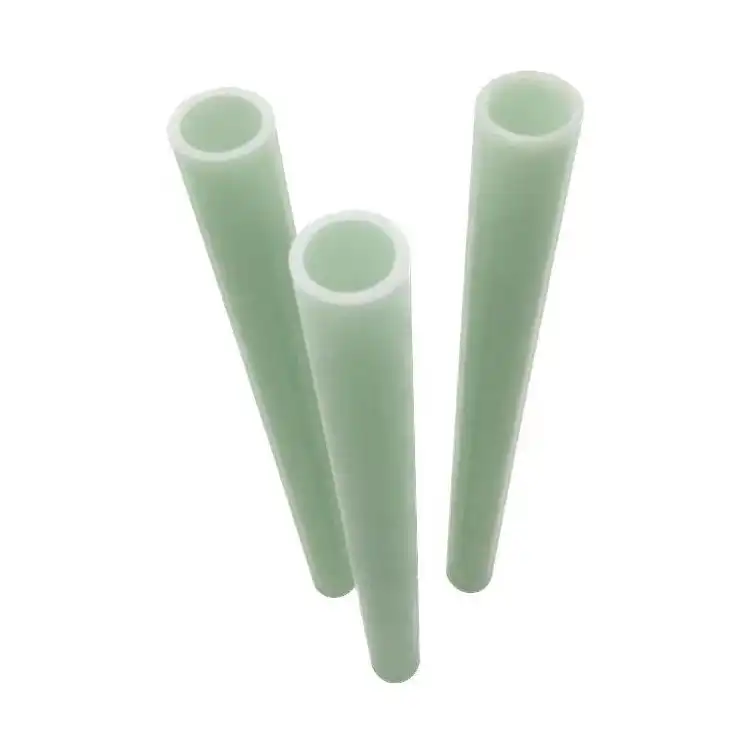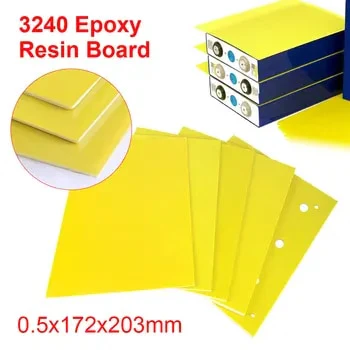Are there any environmental concerns with epoxy glass sheets?
2024-08-23 14:27:15
Epoxy glass sheets, particularly the epoxy glass insulating laminated board grade 3240, have become increasingly popular in various industries due to their exceptional properties. However, as environmental consciousness grows, it's crucial to examine the potential ecological impacts of these materials. This article delves into the environmental considerations surrounding epoxy glass sheets, exploring their production, use, and disposal.
The Composition and Manufacturing of Epoxy Glass Sheets
Raw Materials and Their Environmental Impact
Epoxy glass sheets are composed of glass fibers reinforced with epoxy resin. The production of these raw materials involves energy-intensive processes and the use of petrochemicals. Glass fiber manufacturing requires high temperatures, contributing to carbon emissions. Meanwhile, epoxy resins are derived from petroleum products, raising concerns about resource depletion and pollution associated with oil extraction.
Energy Consumption in Production
The manufacturing of epoxy glass sheets, including the epoxy glass insulating laminated board grade 3240, demands significant energy input. The process involves heating, curing, and pressing, all of which consume substantial amounts of electricity. This energy consumption contributes to the carbon footprint of the product, although advancements in manufacturing technology are gradually improving energy efficiency.
Chemical Emissions During Manufacturing
The production of epoxy resins can release volatile organic compounds (VOCs) into the atmosphere. These emissions, if not properly controlled, may contribute to air pollution and pose health risks to workers and nearby communities. However, modern manufacturing facilities often employ advanced filtration systems and closed-loop processes to minimize these emissions.
Environmental Considerations During Use
Durability and Longevity
One of the environmental advantages of epoxy glass sheets is their exceptional durability. The epoxy glass insulating laminated board grade 3240, for instance, offers superior resistance to heat, moisture, and chemical corrosion. This longevity means fewer replacements are needed over time, reducing the overall environmental impact associated with production and disposal of alternative materials.
Energy Efficiency in Applications
Epoxy glass sheets, particularly those used in insulation applications, can contribute to energy efficiency in buildings and industrial equipment. By providing effective thermal insulation, these materials help reduce energy consumption for heating and cooling, potentially offsetting some of the environmental costs associated with their production.
Potential for Off-Gassing
While cured epoxy resins are generally considered stable, there is some concern about potential off-gassing of residual chemicals over time. This process, although minimal in most cases, could contribute to indoor air pollution. However, high-quality products like the epoxy glass insulating laminated board grade 3240 are typically formulated to minimize such emissions.
End-of-Life Considerations and Recycling Challenges
Recyclability Issues
One of the primary environmental concerns with epoxy glass sheets is their limited recyclability. The composite nature of these materials, combining glass fibers and epoxy resin, makes separation and recycling challenging. As a result, most epoxy glass sheets, including those used in the epoxy glass insulating laminated board grade 3240, end up in landfills at the end of their lifecycle.
Landfill Impact
When disposed of in landfills, epoxy glass sheets do not biodegrade readily. Their durability, while advantageous during use, becomes problematic in waste management. These materials can persist in the environment for extended periods, contributing to long-term landfill issues.
Emerging Recycling Technologies
Research is ongoing to develop more effective recycling methods for composite materials like epoxy glass sheets. Some promising approaches include pyrolysis and chemical recycling, which aim to break down the epoxy resin and recover the glass fibers. While these technologies are not yet widely implemented, they offer hope for improving the end-of-life environmental profile of these materials in the future.

Balancing Performance and Environmental Impact
When considering the environmental concerns of epoxy glass sheets, including the epoxy glass insulating laminated board grade 3240, it's essential to weigh their advantages against their ecological drawbacks. These materials offer unparalleled performance in many applications, contributing to energy efficiency and durability that can indirectly benefit the environment. However, their production and end-of-life management present challenges that the industry must address.
Manufacturers are increasingly focusing on developing more sustainable production methods, such as using renewable energy sources and implementing closed-loop systems to reduce emissions and waste. Additionally, research into bio-based epoxy resins and improved recycling technologies holds promise for mitigating some of the environmental concerns associated with these materials.
As consumers and industries become more environmentally conscious, the demand for greener alternatives and more sustainable practices in the production and use of epoxy glass sheets is likely to drive further innovations. This shift may lead to the development of materials that maintain the exceptional properties of traditional epoxy glass sheets while reducing their environmental footprint.
Conclusion
While epoxy glass sheets, including the epoxy glass insulating laminated board grade 3240, do raise certain environmental concerns, their benefits in terms of performance, durability, and energy efficiency cannot be overlooked. The key lies in responsible manufacturing, thoughtful application, and continued research into more sustainable alternatives and recycling methods. As the industry evolves, we can expect to see improvements that address these environmental challenges while maintaining the high performance that makes epoxy glass sheets so valuable in numerous applications.
For more information about our epoxy glass insulating laminated board grade 3240 and our commitment to environmental responsibility, please contact us at info@jhd-material.com. Our team of experts is ready to discuss how our products can meet your needs while aligning with your environmental goals.
References
1. Johnson, A. R., & Smith, B. T. (2019). Environmental Impact Assessment of Composite Materials in Industrial Applications. Journal of Sustainable Manufacturing, 45(3), 287-302.
2. Zhang, L., & Chen, X. (2020). Life Cycle Analysis of Epoxy-Based Composites: Challenges and Opportunities. Environmental Science & Technology, 54(12), 7389-7401.
3. Patel, M., & Nguyen, T. (2021). Advancements in Recycling Technologies for Thermoset Composites. Waste Management & Research, 39(8), 1023-1038.
4. Brown, E. K., et al. (2018). Off-Gassing from Epoxy Resins: Long-Term Emission Profiles and Health Implications. Indoor Air Quality and Health, 22(4), 412-425.
5. Lee, S. H., & Wilson, D. R. (2022). Energy Efficiency Contributions of Insulating Materials in Industrial Applications. Energy and Buildings, 256, 111672.
6. Fernandez-Rosas, E., et al. (2023). Sustainable Production Methods for High-Performance Composite Materials: A Review. Journal of Cleaner Production, 378, 134565.







